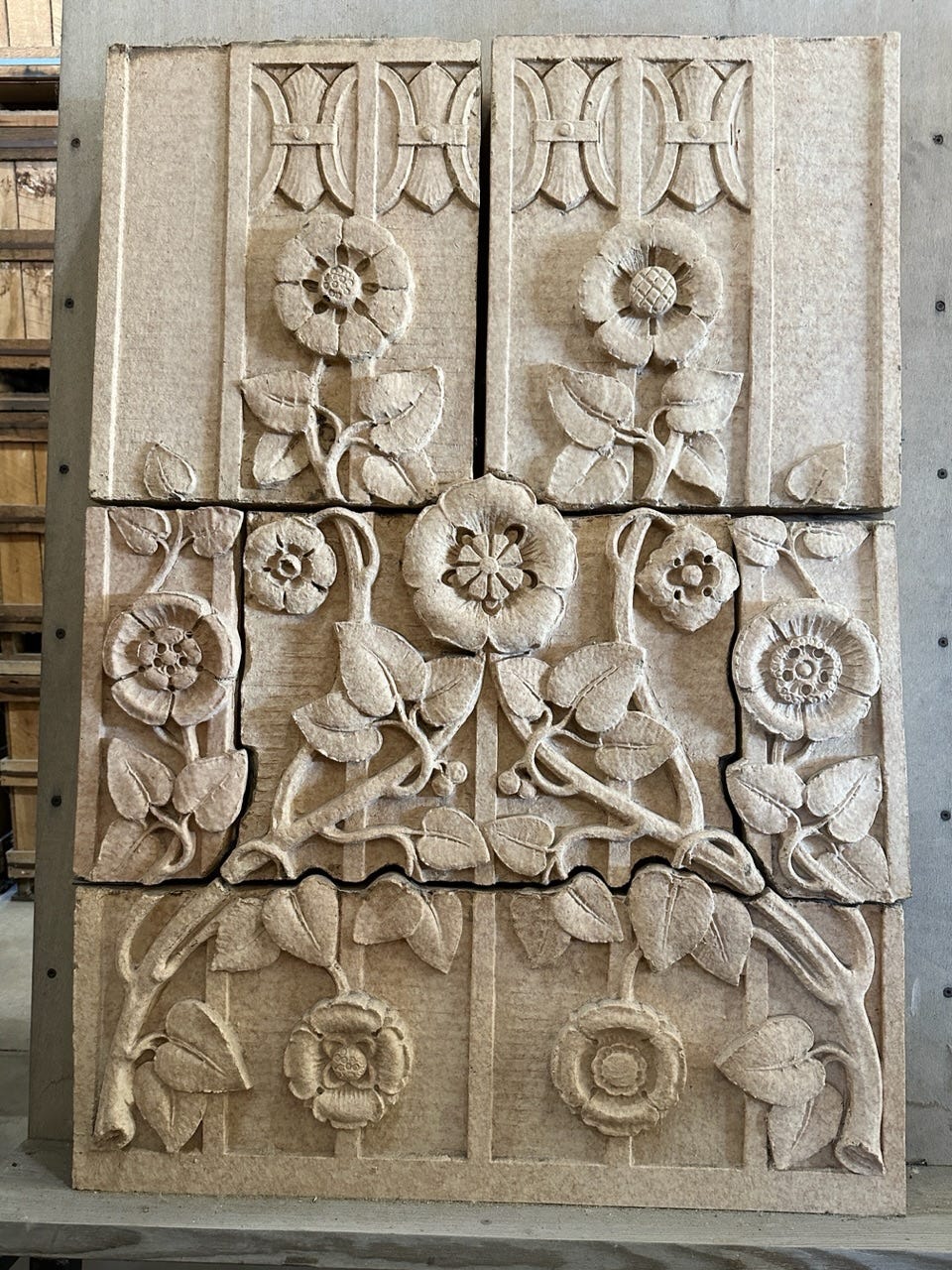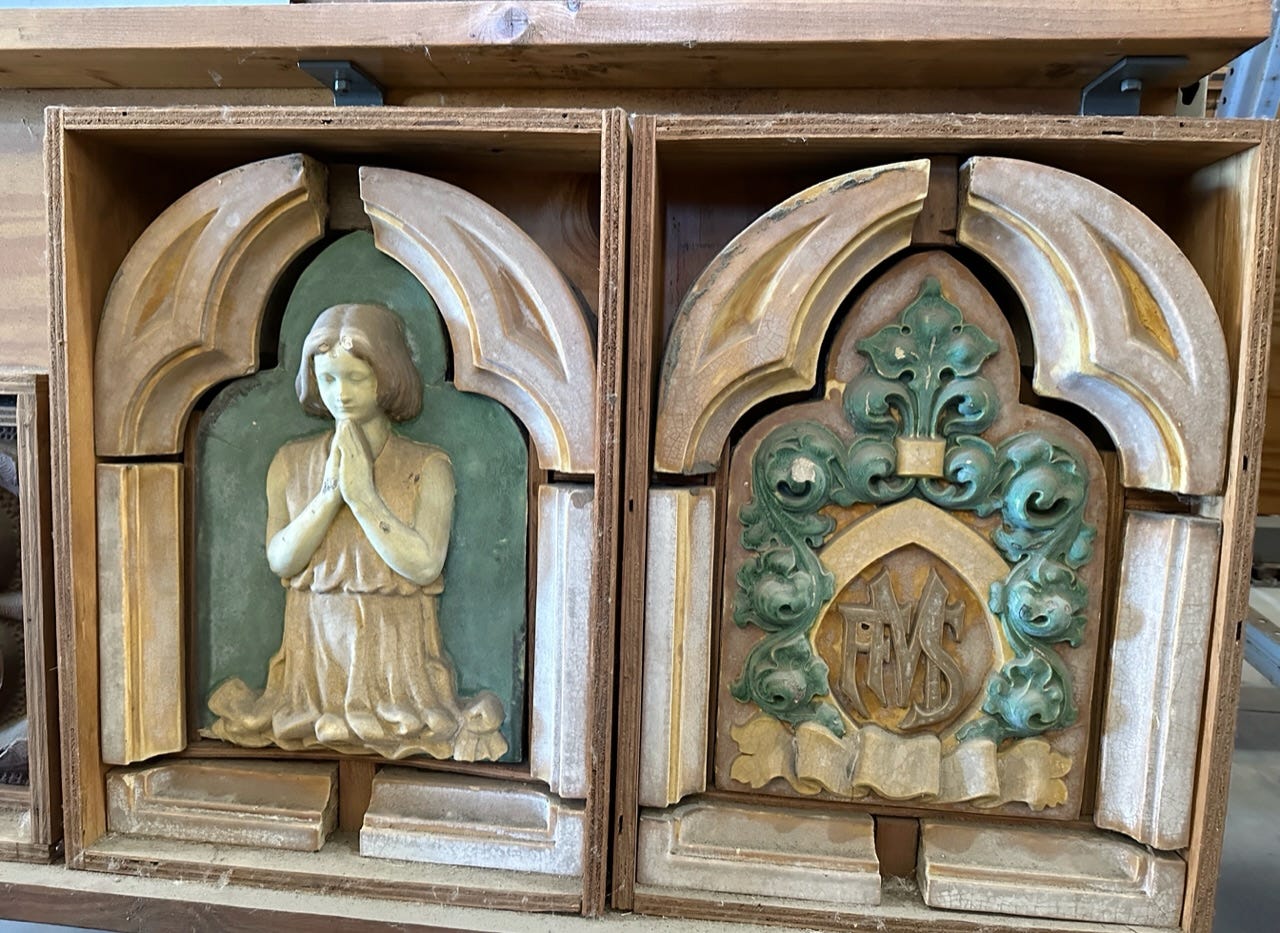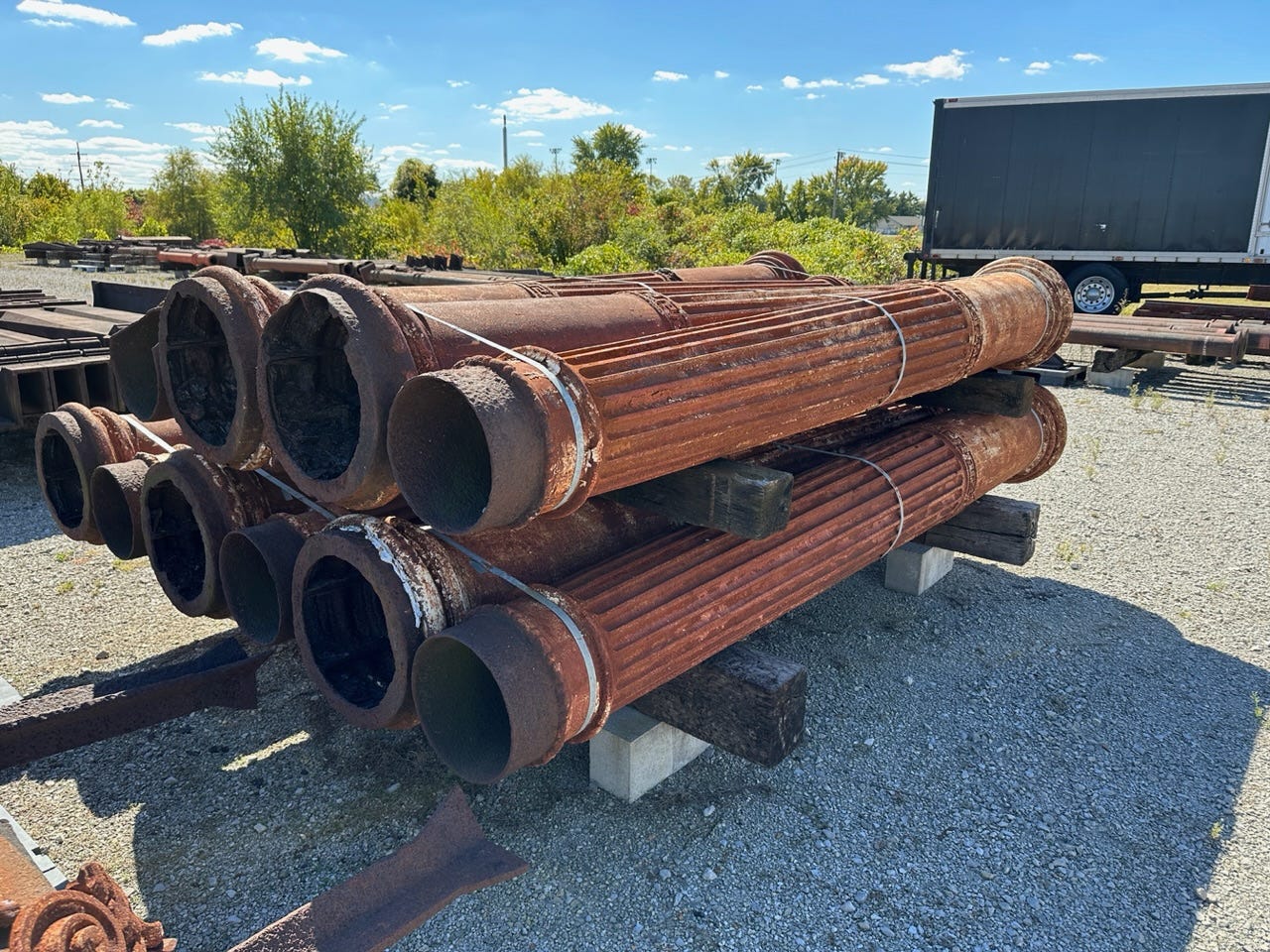Rescuing architecture
A visit to the National Building Arts Center
Today in Unseen St. Louis, rather than dive into another historical topic, I’d like to introduce you to a great historical resource in the St. Louis area that many people aren’t familiar with… until now.
Rescuing architecture
You’re unlikely to accidentally stumble across this collection of historical artifacts tucked away amongst the industrial maze of Sauget, Illinois. But despite its seemingly unglamorous location, the National Building Arts Center is a goldmine of architectural history—of St. Louis and beyond.
If you live in St. Louis (or in any city that experienced a huge building boom in the mid-19th century to early 20th century), you might be familiar with the decorations on office buildings, hotels, and storefronts. Then there are houses with tall columns or businesses with unique signage.
Over time, many of those buildings outlive their usefulness (or are allowed to deteriorate) and get torn down. But what happens to their ornamentation? Does all of the intricate stonework, terracotta, and cast-iron design work get turned into rubble?
Far too frequently, the answer is yes. Many developers consider it to be too time-consuming and costly to save these pieces—and even if they did, where would they put them?
That’s where the National Building Arts Center comes in.
What is the NBAC?
At its core, the National Building Arts Center preserves architectural history in a couple of ways. First, it preserves the tangible materials/artifacts from old urban structures. Second, it also maintains a library of blueprints, research journals, trade publications, and other archival documents.
As stated on the NBAC website:
The National Building Arts Center is a unique, emergent study center housing the nation’s largest and most diversified collection of building artifacts, supported with a research library offering broad holdings in architecture and allied arts. Our collection represents the single largest effort toward understanding the American built environment and the historical process of its creation. The Center strives to use its massive collections to educate the public on all aspects of the building arts from design to fabrication.
The history of the NBAC
The National Building Arts Center began with one man’s passion. Larry Giles began collecting bits of buildings many years ago, acquiring the tiles, ornamentations, storefronts, columns, and other items as buildings around the city were being demolished. Initially, he stored these pieces in a former carriage factory and sold items to people renovating older buildings.
In time, he formed the St. Louis Building Arts Foundation and expanded his reach to other cities. For many years the items remained stored in warehouses and other spaces waiting for their time to come.
In 2005 the St. Louis Building Arts Foundation moved to the site of the former Sterling Steel Casting Company foundry in Sauget, IL. This site was intentionally chosen both due to the nature and size of the space but also because of the foundry’s own history, having opened in 1922 as part of the industrial growth in the St. Louis area. Today there are ongoing efforts to restore and rehabilitate not only the artifacts from other buildings but the structures on the foundry site itself.
Giles, the NBAC founder, died in 2021. In reflecting on Giles’ passing, NBAC Executive Director Michael Allen told St. Louis Magazine,
It very much could have been the end of the project, but instead, after a brief check-in, all hands were on deck. And not only are we continuing the work that Larry Giles set out to achieve, but I think we’ve actually increased our efforts.
Today, the NBAC continues to acquire new pieces for the collection. Their staff and volunteers also plan to expand public programming and refurbish new areas of the foundry site.

How you can learn more
The National Building Arts Center’s website offers a lot of information about the collections and the history of some of the industries. There’s also a nice piece in Atlas Obscura.
If you want to go visit, the physical space at the foundry is closed to the public but there are monthly public tours of the facility. You can go to Eventbrite to sign up for the November 12th or December 10th tour.
The NBAC hopes to add more tours in 2023.
If you have questions about their collection, you can reach them via email, staff@nationalbuildingarts.org.
I hope you enjoyed this brief tour of the National Building Arts Center and are inspired to pay them a visit sometime. It’s a fascinating place, and moreover, it’s obvious that the staff and volunteers are incredibly passionate about what they do and would love to meet like-minded folks.
Please consider sharing this article with friends and organizations that might be interested in what the NBAC has to offer.










